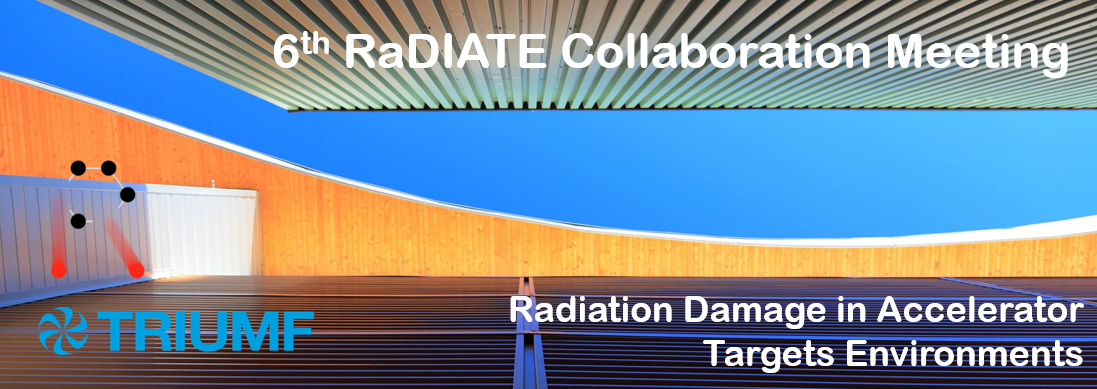Speaker
Dr
Dohyun Kim
(Brookhaven National Laboratory)
Description
The array of post-radiation capabilities at BNL that link campaigns at its irradiation facilities (200 MeV Linac/BLIP and Tandem van de Graaff) with characterization of the effects in both the microstructure and the macrostructure will be presented. Emphasis will be given to the recently achieved
Brookhaven, due to decades-long continuous operation of medical isotope production augmented with proton and spallation-based fast neutron irradiation studies of particle accelerator and nuclear materials, has maintained the handling and characterization capabilities of highly radioactive materials. Specifically, capabilities within the BNL hot cell laboratory, essential for nuclear material studies, include photon spectra and isotopic analysis using high-sensitivity detectors, radioactivity measurements and high precision weight loss or gain assessment.
Macroscopic post-irradiation characterization within the hot cell laboratory is supported by the following capabilities:
• Mechanical post-irradiation behavior consisting of tension-compression, 3-point and 4-point bending analysis.
• Evaluation of thermal expansion including thermal annealing of irradiated samples
• Thermal conductivity based on 4-point electrical resistivity measurements
• Magnetic Whole probe
• Ultrasonic measurements of irradiation-induced degradation of material modulus
Microscopic Analyses: For microscopic, post-irradiation characterization of heavily irradiated materials relied over the years on the high energy X-rays of its synchrotrons, NSLS (now decommissioned) and now NSLS-II (world’s brightest light source). High energy X-rays at the BNL synchrotrons, and in particular the XPD (and future HEX that is currently under construction) beamlines at NSLS II, offer a path in establishing this important connection between micro-scale effects and physical properties of novel materials exposed to high radiation fluxes. Multiple X-ray techniques – XRD, EDXRD, SAXRD, XAS, X-ray Tomography (XPD, HEX), X-ray Imaging (HEX beamline currently under construction) have been commissioned and utilized extensively to-date to micro-characterize proton and fast neutron irradiated materials for several accelerator and reactor initiatives. Such capabilities include in-situ complex state of stress and various environments:
• Multi-directional complex stress (pure bending, tension, compression, twisting)
• Stress intensity/fracture toughness facilitated by high energy X-ray micro-beams recently achieved at NSLS II XPD beam
• Creep (experimental set-up is under preparation/commissioning at NSLS-II
• High-temperature effects, irradiation annealing with simultaneous characterization
• Corrosive environments
• X-ray tomography of irradiated materials (upcoming commissioning experiment)
Characterization of the microstructure under extreme temperatures (currently on unirradiated materials) is provided by Center of Functional Nanomaterials (CFN) for electron microscopy (TEM, SEM, EDS), thermal analysis (DSC, TGA). In coordination with CFN, plans are being evaluated to enhance the hot cell laboratory (Target Processing Laboratory) with electron microscopy which will, in combination with the micro-characterization techniques at NSLS-II based on high-energy X-rays provide a complete PIE.
Characterization of select, relevant irradiated materials of interest to the particle accelerator and reactor materials communities will be presented.
Primary author
Dr
Dohyun Kim
(Brookhaven National Laboratory)
Co-authors
Dr
Cathy Cutler
(Brookhaven National Laboratory)
Dr
Dmitri Medvedev
(Brookhaven National Laboratory)
Dr
Fernando Camino
(Brookhaven National Laboratory)
Dr
Mark Palmer
(Brookhaven National Laboratoryv)
Dr
Simos Nikolaos
(Brookhaven National Laboratory)

